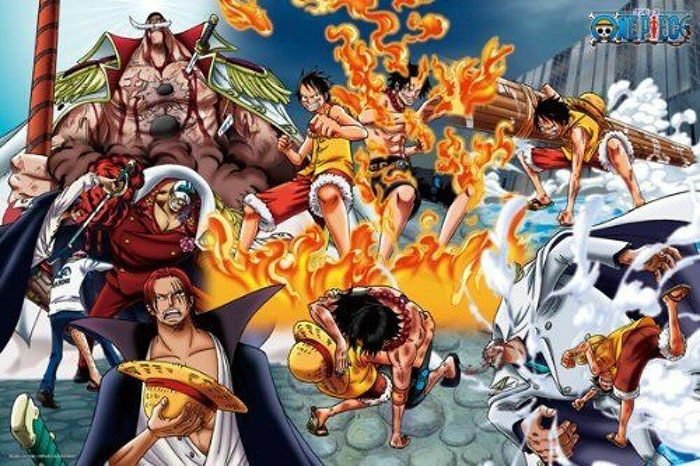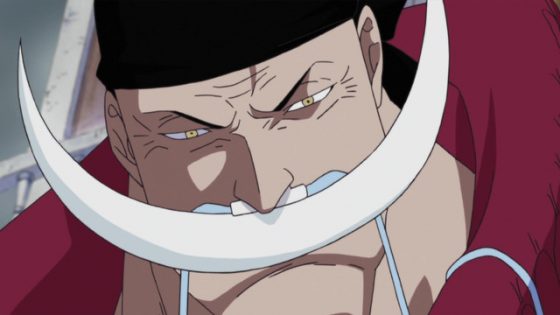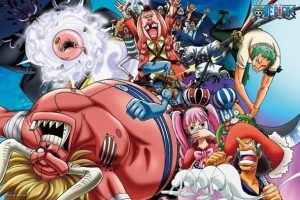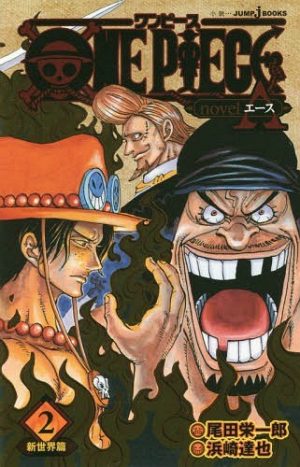
One Piece always felt a little different from its Shounen Jump peers, but it was difficult to pinpoint why. It followed a lot of the same tropes as other Shounen series like Naruto and Dragon Ball, with each arc a standalone story that would throw in small hints about future plot arcs that weren’t fully fleshed out yet in the author’s mind. Yet there was something about One Piece’s storytelling that felt like it was more in control of its narrative than others. Yet, after 5 major plot arcs that (barring some callbacks here and there) were mostly independent of one another, it was tough to definitively say where the story was headed.
Well, after 10 years, fans finally got some resolution they so desperately craved with Paramount War. Let’s take a look at how Paramount War turned One Piece into a global phenomenon.
The Payoff
In all of our past looks on previous story arcs, we’ve failed to mention the “in-between” stories that have punctuated the end of each big story. These bits were there to inform the audience just what was going on around the world at the same time but didn’t have much effect on what the Strawhats were doing. The general plot thread it followed was how Luffy’s older brother Ace was chasing after a traitor of his own crew, the Whitebeard Pirates. We saw Shanks attempting to convince Whitebeard to call off Ace, Blackbeard (both the traitor and the drunk old man Luffy met in Mock Town) wheedling his way into the Shichibukai, and Ace’s eventual confrontation with Blackbeard. No one was really quite sure why we were spending so much time following this story thread, but they added flavor to the world and people assumed it’d be touched upon eventually.
Well, finally, this plot came to a head, as it was the central focal point of the Paramount War. In between the Straw Hats having their grand adventures touring the world and fighting injustice, Oda was playing the long game all along. Now Luffy was thrust right into the middle of a massive conflict that was getting built up over the course of a decade. Like Enies Lobby, this shifted One Piece’s image once again. This wasn’t just any other Shounen battle series, but a thoughtfully charted out adventure story that was continuously building on itself. The Paramount War wasn’t a simple plot arc, but an event carefully charted out over the course of years.
Strawhats in Peril
Of course, it wasn’t simply plot threads that were coming together, but several themes as well. The past few arcs saw the Strawhats struggling more and more against more threatening opponents with more and more personal losses. Enies Lobby required them to give up their precious Going Merry. Thriller Bark ended with Zoro nearly dying for the sake of protecting Luffy. And now, the Strawhats had finally met their match. They picked a fight with someone that they simply could not possibly stand-up against.
It’s just that the person they actually picked a fight against wasn’t anyone who was actually physically stronger than them. It was a Tenryuubito, the highest ranking nobility in the world. And it’s through the Tenryuubito that we see the world at its most cruel. We watch them callously blow up their slaves for attempting to disobey them, other potential slaves commit suicide just to avoid being taken into their ranks, and we watch the Tenryuubito laugh with glee as they shoot Hachi in order to capture him.
Luffy naturally stands in for the audience’s yearning for retribution, but something’s different. As a result of Luffy punching one of them out, they get a Marine Admiral sent after them, and the results are catastrophic. They couldn’t even stand up to Vegapunk’s personal guard Sentomaru, let alone Admiral Kizaru and a Pacifista (a robot clone of Kuma). The only way they survive is due to the former first mate of Gold Roger, Dark King Rayleigh, and the real Kuma standing in, and that requires the entire crew to be split up from each other. Even if we received some temporary catharsis watching Luffy punch the Tenryuubito’s lights out, it’s a hollow victory because even if the Tenryuubito are worse than anyone we’ve ever seen before, they’re also the ones that get the last laugh in the end. The Strawhats failed to change anything.
Luffy Defeated
After getting separated from his crew, we find Luffy consistently over his head. He tries to break into Impel Down to save Ace before his public execution, but can’t win in a fight against its warden Magellan and has to run away while enemy-turned-friend Bon Clay sacrifices himself for Luffy’s escape. And even when Luffy and company show up at the battlefield, Luffy finds himself constantly overshadowed by Whitebeard and the military forces.
The greatest irony, though, is that Luffy almost succeeded. He actually unlocked Ace’s chains and the two were almost able to escape with Whitebeard sacrificing himself to stall for time. There’s just one problem, though: Ace gets goaded into a fight with Akainu over his pride of being a member of the Whitebeard Pirates. And as Luffy tries to convince Ace to stop fighting and come with him, Akainu targets Luffy instead and Ace dies from the attack. This reflects why Ace got captured in the first place as well: Blackbeard originally wanted to capture Luffy to get the title of Shichibukai but turned in Ace instead because Ace was chasing him down. Yet again, Luffy’s life is only saved due to the sacrifice of someone else. He’s not actually strong enough to protect the people he cares about. Right from when Luffy punched out the Tenryuubito, he has only survived because others were looking out for him.
This realization doesn’t just hurt him, but also us as the reader/viewer. Luffy throughout the series has represented the little guy standing up to all the injustices of the world, yet as it turns out, he can’t even change anything. Even Whitebeard, known as the strongest man in the world at the time, failed to stop the world government. This sets a reference point for the reader to understand just how dire the situation of the word really is right now. How can Luffy, a relative nobody in the grander scheme of things, hope to change the fate of the planet when the world’s strongest man couldn’t either? For the first time in the series, we care about watching Luffy getting actively stronger.
Final Thoughts

One Piece is, at its core, a story of a bunch of broken people who manage to find comfort in one another but have to fight tooth and nail at every opportunity just to keep their own identity in the face of what the global society wants of them. This is summed up beautifully in Paramount War by pitting Luffy against the strongest people in the world and failing to make any kind of difference.
From here on out, it’s a different game for One Piece. It’s hard to look back on those days where Luffy was punching out a clown for making a dog cry to now, where Luffy is going toe-to-toe with the strongest pirates in the world, but here we are.
Recommended Post



